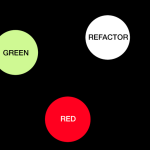Master The Power Of Programming Techniques In Computer Science: Unleash Your Potential Today!
Programming Techniques in Computer Science
Introduction
Welcome, readers! In this article, we will delve into the world of programming techniques in computer science. Programming is a fundamental skill in today’s digital age, and understanding various techniques can greatly enhance your problem-solving abilities and make you a more efficient programmer. Whether you are a seasoned developer or just starting your journey into the world of coding, this article will provide valuable insights into different programming techniques and their applications. Let’s dive in!
1 Picture Gallery: Master The Power Of Programming Techniques In Computer Science: Unleash Your Potential Today!

What is Programming Techniques?
📚 Programming techniques refer to the various methodologies and approaches used by programmers to solve problems and develop software applications. These techniques involve the use of algorithms, data structures, and programming languages to design efficient and effective solutions. By employing different programming techniques, developers can optimize code performance, improve scalability, and enhance the user experience.
Algorithmic Paradigms

Image Source: bbvaopenmind.com
✨ In computer science, algorithmic paradigms are overarching concepts that guide the design and analysis of algorithms. Some common algorithmic paradigms include:
1. Divide and Conquer: This technique involves breaking down a complex problem into smaller subproblems, solving them independently, and then combining the solutions to solve the original problem.
2. Greedy Algorithms: These algorithms make locally optimal choices at each step, with the hope of finding a globally optimal solution.
3. Dynamic Programming: This technique solves a problem by breaking it down into overlapping subproblems and solving each subproblem only once, storing the results in a table to avoid redundant computations.
4. Backtracking: Backtracking involves building solutions incrementally and backtracking when the current solution is not feasible or correct, exploring other possibilities.
5. Brute Force: This technique involves trying all possible solutions systematically until the correct solution is found, even if it is not the most efficient approach.
These algorithmic paradigms provide a structured approach to problem-solving and help programmers in designing efficient algorithms.
Data Structures
📊 Data structures are essential components in programming and play a crucial role in managing and organizing data efficiently. Some commonly used data structures include:
1. Arrays: Arrays store a collection of elements of the same type in contiguous memory locations and provide fast access to elements using indices.
2. Linked Lists: Linked lists are dynamic data structures that store elements as nodes, with each node containing a reference to the next node in the list.
3. Stacks: Stacks follow the Last-In-First-Out (LIFO) principle and allow operations such as push (adding an element to the top) and pop (removing the top element).
4. Queues: Queues follow the First-In-First-Out (FIFO) principle and support operations such as enqueue (adding an element to the rear) and dequeue (removing the front element).
5. Trees: Trees are hierarchical data structures with a root node and child nodes, representing relationships between elements in a hierarchical manner.
6. Graphs: Graphs consist of nodes (vertices) connected by edges and are used to represent relationships between entities.
Understanding these data structures and their properties enables programmers to choose the appropriate structure for storing and manipulating data efficiently.
When to Use Programming Techniques?
🕒 Programming techniques are applied in various scenarios to solve complex problems and optimize software development. Here are a few situations where programming techniques are commonly used:
1. Optimization: When developing applications that require efficient execution, programming techniques help optimize algorithms and data structures to minimize time and space complexities.
2. Algorithm Design: Programming techniques are essential in designing algorithms that solve specific problems, such as searching, sorting, or graph traversal.
3. Software Engineering: Programming techniques play a crucial role in software engineering processes, including requirements analysis, design, implementation, testing, and maintenance.
4. Artificial Intelligence: Techniques like machine learning, natural language processing, and computer vision heavily rely on programming techniques to train models and extract insights from data.
By applying appropriate programming techniques in these scenarios, developers can create robust and efficient software solutions.
Why Programming Techniques Are Important?
💡 Programming techniques are vital in computer science and software development for several reasons:
1. Efficiency: By employing effective programming techniques, developers can optimize algorithms and data structures, resulting in faster and more efficient software execution.
2. Scalability: Programming techniques enable the development of scalable solutions that can handle large amounts of data and adapt to changing requirements.
3. Reusability: Techniques like modular programming and object-oriented programming promote code reusability, reducing development time and effort.
4. Problem Solving: Programming techniques equip developers with problem-solving skills, enabling them to tackle complex challenges and devise innovative solutions.
5. Enhanced User Experience: By utilizing appropriate programming techniques, developers can create user-friendly applications with intuitive interfaces and smooth interactions.
Overall, programming techniques are essential for creating efficient, scalable, and user-centric software solutions.
How to Apply Programming Techniques?
🔧 Applying programming techniques effectively requires a systematic approach. Here are some steps to follow:
1. Understand the Problem: Clearly define the problem and its requirements, ensuring a thorough understanding of the problem domain.
2. Choose the Right Technique: Based on the problem requirements and constraints, select an appropriate programming technique, considering factors like efficiency, scalability, and maintainability.
3. Design the Solution: Plan and design the solution using the chosen technique, breaking down the problem into smaller subproblems and identifying the necessary data structures and algorithms.
4. Implement and Test: Translate the design into code, implementing the algorithms and data structures. Test the solution against different test cases to ensure correctness and efficiency.
5. Analyze and Optimize: Evaluate the performance of the solution, analyze time and space complexities, and optimize the code if necessary to improve efficiency.
By following this systematic approach, developers can effectively apply programming techniques and develop high-quality software solutions.
Advantages and Disadvantages of Programming Techniques
Advantages:
1. Efficiency: Programming techniques help optimize code performance, resulting in faster and more efficient execution.
2. Flexibility: Different programming techniques offer flexibility in solving problems, allowing developers to choose the most suitable approach.
3. Scalability: By employing appropriate techniques, developers can create scalable solutions that can handle increasing amounts of data.
Disadvantages:
1. Learning Curve: Mastery of programming techniques requires time and effort, as each technique has its own set of concepts and best practices.
2. Complexity: Some programming techniques, such as backtracking or dynamic programming, can be complex to implement and analyze.
3. Trade-offs: Choosing a programming technique involves trade-offs between factors like code efficiency, development time, and maintainability.
Frequently Asked Questions (FAQ)
1. Q: What is the difference between algorithm and programming technique?
A: An algorithm is a step-by-step procedure to solve a problem, while programming techniques refer to the methodologies used to design and implement algorithms.
2. Q: Can I use multiple programming techniques in a single project?
A: Yes, depending on the requirements of your project, you can combine different programming techniques to tackle various aspects.
3. Q: Are programming techniques language-specific?
A: No, programming techniques are language-agnostic and can be applied in any programming language.
4. Q: How can I learn programming techniques?
A: You can learn programming techniques through online tutorials, books, courses, and practice by solving coding problems.
5. Q: Are programming techniques only for experienced programmers?
A: No, programming techniques are beneficial for both experienced and novice programmers as they enhance problem-solving abilities.
Conclusion
In conclusion, programming techniques are essential tools for programmers to solve complex problems and develop efficient software solutions. By understanding different algorithmic paradigms and data structures, developers can optimize their code, improve performance, and enhance the user experience. Utilizing appropriate programming techniques empowers developers to tackle diverse challenges and create scalable and user-centric applications. So, don’t hesitate to explore programming techniques and unlock your full potential as a developer.
Final Remarks
📝 In this article, we have explored various programming techniques in computer science and their significance in software development. It is essential to continually learn and update your skills in programming techniques as technology advances at a rapid pace. Keep exploring new techniques, experimenting with different approaches, and staying up-to-date with the latest trends in the programming world. Programming techniques are powerful tools that can shape the future of technology and create innovative solutions. Happy coding, friends!
This post topic: Programming
